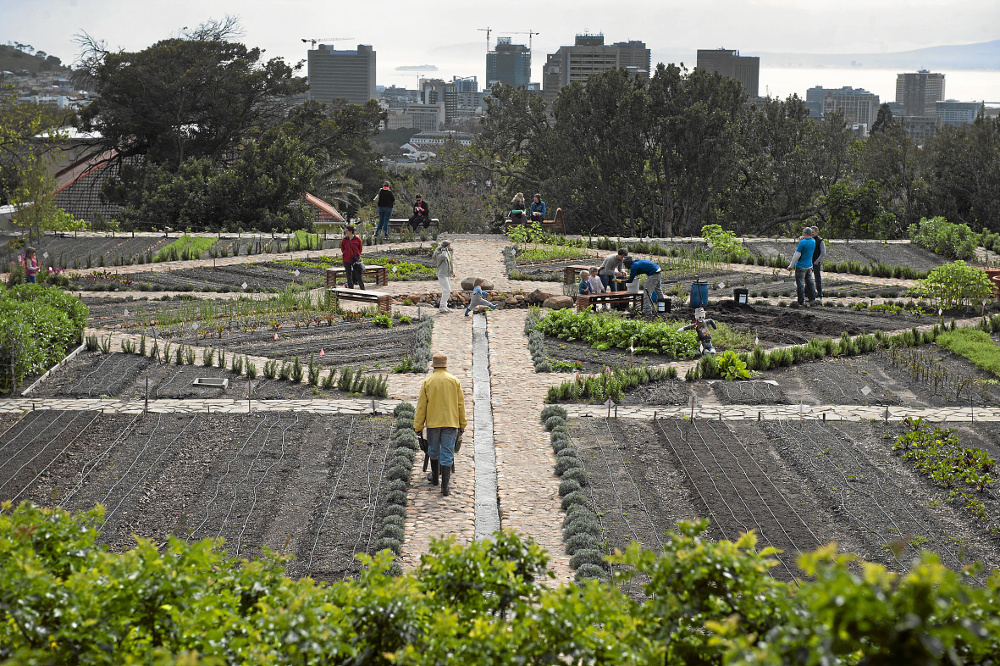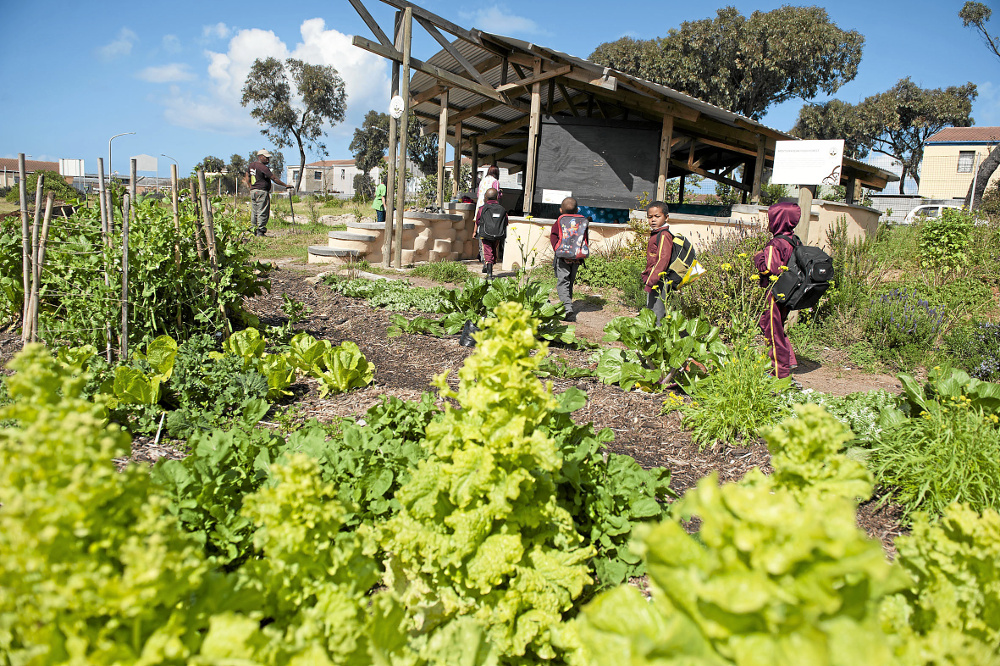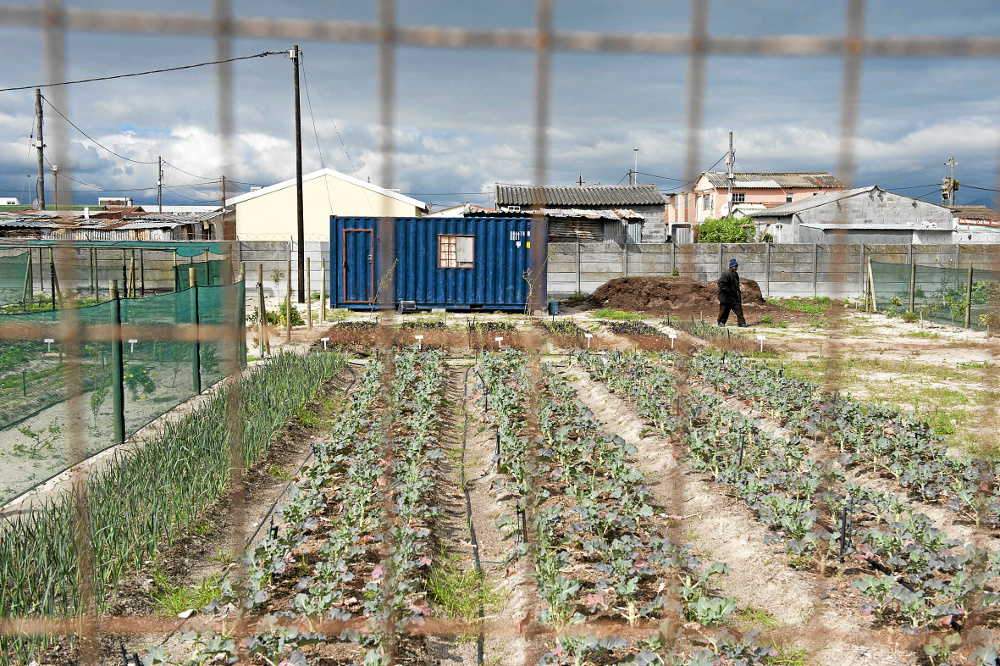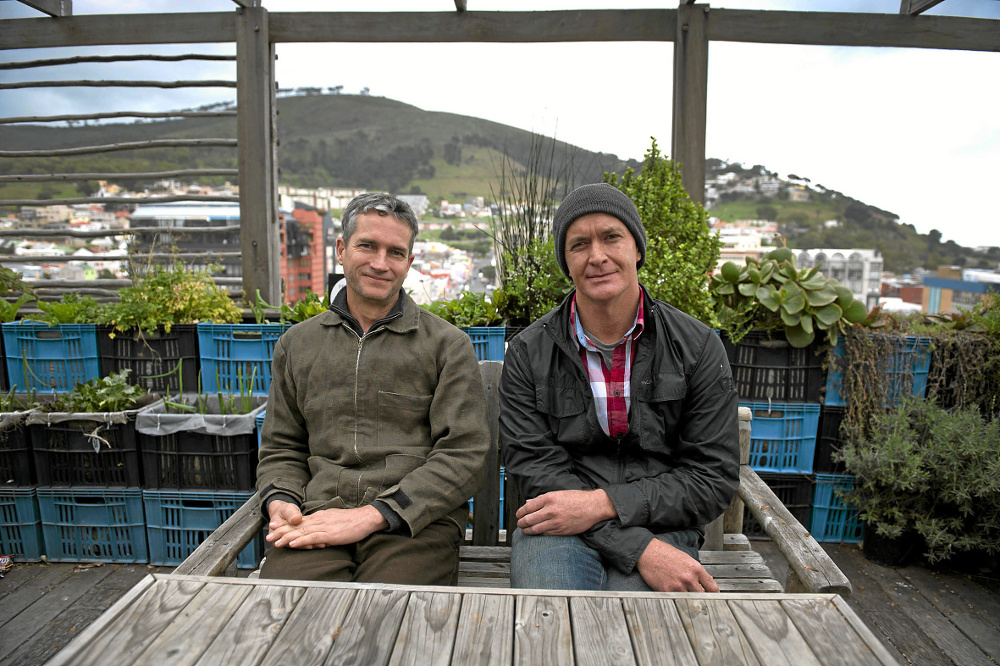Leonie Joubert points out in her remarkable book The Hungry Season that, as urbanisation continues apace, food security in our cities will be the challenge of the century, far surpassing in scale the rural poverty with which we are still grappling. On top of this, climate change is set to wreak havoc with existing systems.
In a nutshell, food security means consistent access to nutritious and culturally acceptable food from a trustworthy source. To achieve this, growing food within the city is coming to be seen as a necessity.
The issues are complex and not always apparent. People can be plump but badly malnourished. Children may get the calorie count but suffer from deficiency diseases. Stores can be brimming with produce but the people surrounding them don't have the means to buy from them. Whole nations can starve because markets go awry even when there is an abundance of a crop, as happened in the rice panic of 2008. And the wealthy, too, can find their supermarket shelves empty thanks to a volcano in Iceland or revolution in the streets.
There is no shortage of ideas to help to solve these problems but solutions need to be thought through. For example, without the right infrastructure and knowledge, growing vegetables in the backyard and recycling grey water from the household can increase contamination from waterborne diseases and recontamination within a family, especially in overcrowded, poorly resourced settlements.
Worldwide, many organisations and individuals are tackling these problems.
The three very different projects in Cape Town described here reveal much that is great about South Africa. Whole communities are involved. They are led by individuals who are hopeful and determined, idealistic but practical.
At a food security summit held in May in Khayelitsha, it was clear that the government got the message. But, although local authorities and the government have been open ?and receptive, they seem incapable of lifting more than their little finger, though even doing that minimum has in some cases made all the ?difference.

Oranjezicht City Farm
Six years ago, Sheryl Ozinsky was attacked in her home, a gun held to her head. This traumatic incident made her completely re-evaluate her world.
"Where was the support from my community? There were no crime stats, no patrolling, no one who could advise us."
Ozinsky responded with the Oranjezicht Higgovale Neighbourhood Watch, which has now even managed to place licence-plate reading security cameras on the streets.
In a wealthy suburb such as Oranjezicht, residents hardly know each other, hence the possibly true story of someone helping burglars to pack a getaway car with the neighbour's property.
"It's very hard building community in an affluent area," says Ozinsky.
But in time the Watch became about far more than crime.
The small Homestead Park and a forgotten bowling green on Upper Orange Street fell under its purview. A rat-infested informal rubbish tip with knee-high grass and crumbling walls, it was a haven for drug pushers and vagabonds.
Now, alongside the restored Homestead Park, with its swings, roundabout, seesaw and slides, stands the Oranjezicht City Farm. Looking out over its 2?500m2 of formally laid-out, neat vegetable beds, circular fishpond, cobbled walkways and with its fresh, fecund farm smell, it is hard to believe that just over a year ago this was an urban eyesore.
Ozinsky's insight is that "one can build a community with carrots". In fact, purple carrots — these were a mini-sensation when they were grown on the farm. So too were black radishes.
The farm, under the tutelage of an organic farmer, Mario Graziani, is still finding its feet, though it has been producing steadily, withstanding predatory Egyptian geese, raiding squirrels and aphid-farming ants, thanks to the hard work of dozens of community volunteers (almost 100) and several full-time apprentices.
The farm reclaims the heritage of a farm established in 1709. Several gnarled but healthy 200-year-old oak trees still stand proud, so too the columns for not a slave bell but a market bell.
The market has also been resurrected, every Saturday, and has a healthy turnover. It is a weekly social gathering for a community proud of what it has achieved, feeling part of the process and taking ownership of its surroundings.
With the park nearby, children learn about food production and reconnect with nature. Not only children, but also one volunteer, a lawyer, learned for the first time that peas came in a pod.
The long-term plan is to be a catalyst for other communities.
"It's about residents realising they are not going to get their quality of life improved by the government or the municipality," says Ozinsky.
"They have to do it themselves. And if you make one little success story, then it enables everybody. Then it's not just a dream because, look, it's happening here."

Seed
For 12 years now, an organisation called Seed has done pioneering work, among other initiatives, growing "outdoor classrooms" at under-resourced schools and teaching people to garden around their homes.
Leigh Brown, the energetic director of Seed's Rocklands Urban Abundance Centre in Mitchell's Plain on the Cape Flats, says: "Through schools, you can reach into and transform whole neighbourhoods."
The centre is based on the grounds of the Rocklands Primary School, thanks to the foresight of the principal, Kevin Pretorius.
Brown points out the seed bank for people to buy seedlings and also some polystyrene packs with fancy vegetables "for Oranjezicht types". The rest of the food grown here goes into feeding schemes.
Brown shows us perfect lettuces and mounds of sweet potatoes. This is "food aimed around children's stomachs".
Red lettuce is hardier in summer but the local kids had to be introduced to it.
"Society has lost its ecological literacy," says Brown. "People can name five brands of jeans but not five indigenous trees."
Most intriguing of all, Seed has started printing its own currency. Called seeds, it comes in green 20 and brown 10 seed notes, with the legend "Seeds are the currency of Food Freedom" and "Join the Food Freedom Revolution".
As people complete courses, they get a stack of the "cash" to pay others for working in their garden. This way money keeps in circulation in the community.
Similar local currencies are a strategy proven elsewhere in the world; one by a Queens, New York, school principal, who transformed his school from an F to a C, according to that city's education department.
No snails or Egyptian geese here: human pests are the biggest problem. Local hoodlums scale the fence and wantonly break things. At one school in Athlone, the farm chickens were decapitated and then hung on a rope strung across the school grounds.
"We must get to kids early because there is so much risk and chaos around them. Connect them to the daily miracles implicit in organic gardening and nature, and they have a much better chance of making it through all the challenges. The kids here, kids in grade four, have already been through hell."
In a tough neighbourhood, Seed, supported by the community, remains resilient.

Photography by David Harrison
Abalimi Bezekhaya
Based in Khayelitsha, Nyanga and surrounds, Abalimi Bezekhaya (Farmers of Home) is the oldest, biggest and most successful food growing community organisation in Cape Town. It has thousands of micro-farmers on its books and currently 55 gardens on parcels of otherwise underutilised land.
Operations director Christina Thenjiwe Kaba, now 65, says that, when she first started many years ago, people would say: "I'm doing this because I'm not educated, because I'm from Transkei, because I'm not city-born. Now they ask me every day, when can we start. They've seen how it changes one's life."
A garden teacher becomes a social worker, she adds.
Most of the farmers are pensioners. Among the longest-standing members are Nancy Witbooi and Philippina Ndamane, showing no visible signs of strain, doing what must be back-breaking work.
I ask when they last bought ?vegetables from a supermarket. Witbooi laughs; so long ago, she can't remember.
When Abalimi started, the soil was poor white sand. Now there is rich soil. "If you live in a desert, you know how to live in a desert," says Kaba.
Surrounded by shacks, today there stand oases of carrots, leeks, potatoes, spring onions, spinach, kale, cabbage and lettuce, all of it organically farmed.
"Gangsters don't see vegetables as a good currency," Kaba chuckles.
"But they want the tools and the containers."
Rats are a hazard too, fond of ?the broccoli and kohlrabi, says Sibongile Sityebi, one of the few men involved.
But the biggest challenges, according to Kaba, are maintaining quality and getting the gardeners to reinvest instead of expecting to be funded continually.
Abalimi offers a comprehensive package: seed, manure and tools, know-how and training, business skills and, after supporting local needs, sustainability, thanks to Harvest of Hope, which delivers boxes of vegetables to weekly subscribers in the wealthier suburbs.
Abalimi has proved that urban African microfarmers are key not only to food security but also to social cohesion and stability.
Visit abalimi.org.za, www.ozcf.co.za and seed.org.za. Order your veggies from harvestofhope.co.za
Fill the sky with veggie dreams
A 4000m2 urban farm on the roof of an 11-storey building in the Brooklyn Navy Yard, New York; a sweet potato farm on an office building in Tokyo; dozens of tomato plants on the roof of a fast-food hamburger joint in Boston; a glass greenhouse with 40 varieties of vegetables atop an office block in downtown Montreal.
From friends who, a decade ago in Manhattan, were bartering carrots for cauliflower via the internet and balancing their urban vegetable harvests, to dreams of skyscraper-high greenhouses to feed growing urban populations, rooftop gardening in cities has been gaining traction across the world.
Vegetable gardens in the heart of the city are now finally catching on in South Africa. In Durban, on Monty Naicker Road, is the Priority Zone rooftop veggie garden established by the eThekwini municipality's department of agriculture, which seems to be leading the country in urban green policy.
In Johannesburg, the 217m2 Affordable Housing Company rooftop garden uses old car tyres as planters. At 44 Wale Street in Cape Town is a pilot project garden commissioned by the city's environmental resource management department. Here I meet Stephen Lamb, founder of Touching the Earth Lightly, and design partner Andrew Lord, in their eyrie atop the 12-storey building.
"Think like a bird," says Lamb. "That's the key to rooftop gardening. You nest and hunker down."
This being Cape Town, wind protection from the formidable southeaster is wise. The garden has a wooden beam frame made from invasive alien timber and is set atop the roof on a deck.
The vegetables grow in old, plastic dairy crates, about three crates high, with the bottoms cut out.
 ?
?
Because this is a demonstration garden, Lamb and partners have gone for a very wide range of plants: indigenous trees, spekboom, succulents and a great variety of vegetables and herbs. It has a hydroponic wall powered by a solar pump. Some mushrooms have even spontaneously germinated.
Lamb says there are several benefits to growing vegetables on vacant roofs, which include reducing energy consumption and carbon emissions because it brings produce closer to the end user and gardens regulate the temperature of buildings (which on a large scale would cool the city in summer).
He has identified and mapped 48 hectares of usable space on rooftops in the city–that's the size of a small farm. A key market for any produce that would make urban food gardens a viable and sustainable project would be the many delis and restaurants in the city below.
Lamb calculates that 125 jobs could be created to maintain the gardens and sell the produce at ground level. He is adamant that unemployed people in the city should be recruited. An obvious obstacle would be getting landlords to grant these people access to the buildings.
Lamb's thinking makes sense because the homeless people in the city are part of the community and such inclusion would greatly increase the benefits and impact of urban gardening.
But for all this idealism, Lamb says real food security can only be achieved outside the city, so he has several other projects on the go, including Green Shack–innovative rooftop garden units and vertical gardens that can be fitted to shacks in informal settlements. Clearly, he is even more excited by these prospects.
Looking at magazine articles about rooftop vegetable gardens, there is a hint that it's all just a lifestyle fad or yuppie hobby to grow organic produce on a penthouse roof, but converting the rich is always a worthy pursuit, one through which the influential may well grasp the importance of Lamb's other initiatives.
As a boy, Lamb writes in his blog, when he asked his father for something impossible, his father would turn him down by saying: "… and I'll buy you a farm in Adderley Street", the city's asphalt heart. Today, he has that farm.–Brent Meersman
Visit: touchingtheearthlightly.com Keen to set up a balcony or rooftop garden Contact Mike Bird of Own Grown through owngrown.co.za